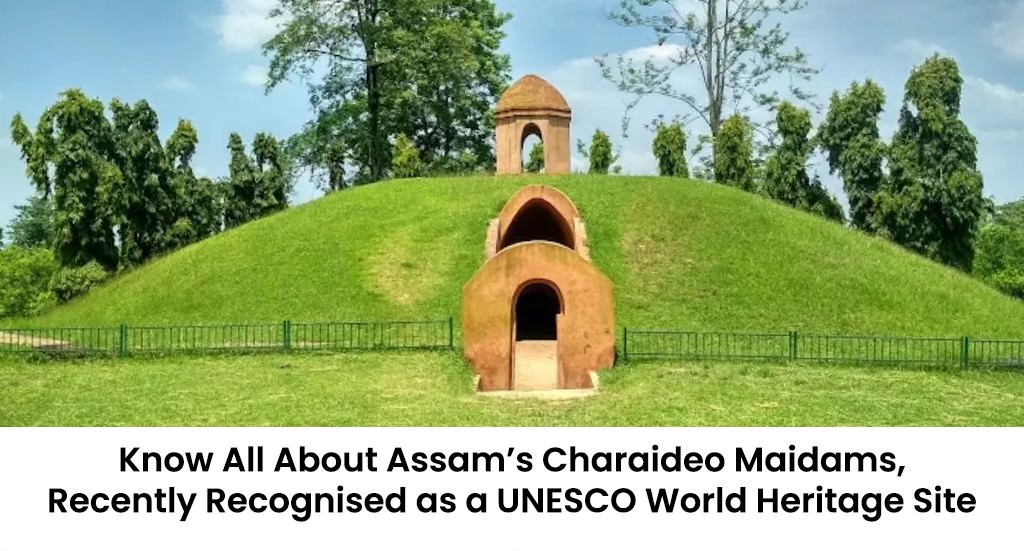The Charaideo Maidams, a unique 700-year-old mound-burial system of the Ahom dynasty in Assam, was added to UNESCO’s World Heritage List on July 26, becoming India’s 43rd property on the prestigious index. These burial sites, set in the foothills of the Patkai Ranges in eastern Assam and located around 30 km from Sivasagar town, are still considered sacred by many locals. The Ahom dynasty ruled much of Assam and the North East from 1228 to 1826 AD. The official UNESCO website states that for 600 years, the Tai-Ahom created moidams, enhancing the natural topography of hills, forests and water, thus forming a sacred geography. The site offers an understanding of the history, culture, and architecture of the dynasty.
Over the last decade, India has successfully inscribed 13 World Heritage Properties, placing it 6th globally for the most number of World Heritage Properties.
What are Maidams?
Maidams are burial mounds of Ahom royalty and aristocracy. Charaideo houses maidams exclusively for Ahom royals, while others are scattered across Eastern Assam between Jorhat and Dibrugarh. Similar to Egyptian pyramids, these mounds contain the remains and belongings of Ahom rulers, whose 600-year rule ended with the British takeover. After the 18th century, the Ahoms adopted Hindu cremation, entombing cremated bones and ashes in maidams at Charaideo. The district’s ancient ruins and the architectural expertise of medieval Assamese artisans add to its glory.
A typical maidam at Charaideo has chambers in a vault topped by a grass-covered hemispherical mound with a pavilion called the chow chali and is surrounded by a low octagonal wall with one entrance. Ahom kings and queens were buried inside, reflecting their Tai burial origins. The height of a maidam indicates the buried individual’s power and stature, though most maidams remain unidentified except for those of Gadhadhar Singha and Rudra Singha.
The maidams of Charaideo, often called the “Pyramids of Assam,” resemble ancient Egyptian burial practices. They contain not only the deceased king but also items for the afterlife, along with servants, horses, livestock, and even wives.
What does Charaideo mean?
The name “Charaideo” comes from the Tai Ahom words “Che” (city/town), “Rai” (to shine), and “Doi” (hill), meaning “a shining town situated on a hilltop.” Established as the Ahom dynasty’s first capital in 1253 AD by King Sukaphaa, Charaideo remained a symbolic centre of power and a resting place for Ahom royals. Today, the maidams, with over 150 in the region and 30 protected by the Archaeological Survey of India, are major tourist attractions. The cluster of maidams in Charaideo is notable for its scale, concentration, and sacred significance in Tai-Ahom culture.
What makes this entry a special one?
This is the first time a site from Northeast India has been added to the UNESCO World Heritage list under the cultural property category. It is Assam’s third World Heritage Site, following Kaziranga and Manas National Parks. Chief Minister Himanta Biswa Sarma highlighted in a letter to Prime Minister Modi that out of 386 explored maidams, 90 at Charaideo are the best preserved and most representative. He noted their high veneration and recalled the exhibition at Vigyan Bhawan showcasing the unique burial architecture and Tai Ahom traditions.








